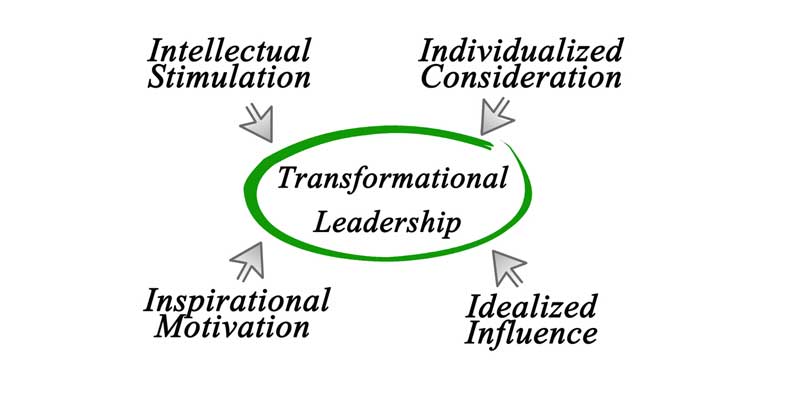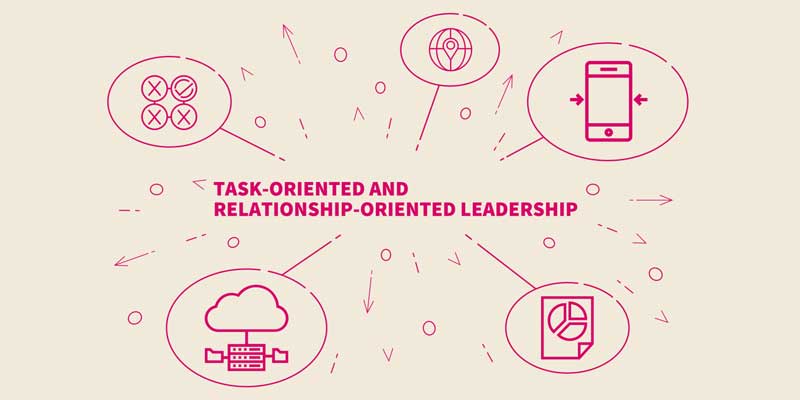Leadership may be a fluid observation. It is found by psychologists that the types of leadership will have a crucial impact on however a good team performs.
Leaders repeatedly check all the works done by them to their goals so that all the works are done properly and the company can achieve its goals.
When you are a leader, and you need to motivate your team members, had to work organized, in that case, you need to consider all types of leadership and had to follow a specific type to deal with specific people. Whereas each leader is totally different, there are twelve types of leadership unremarkably employed in the work.
Why are the types of leadership important?
To be a good and effective leader, one needs to follow all types of leadership at any given time.
By taking the time to inform yourself with types of leadership, you would possibly acknowledge sure areas to enhance upon or expand your own types of leadership. You need to establish different ways and have to consider types of leadership to guide your followers so that they can highly serve your current goals. You need to set some decisions for the people who follow unique types of leadership than your own.
Types of Leadership
Consciously, or subconsciously, you’ll little doubt use a number of types of leadership featured below, a minimum of a number of the time. By understanding these types of leadership and their impact, you’ll become a lot of versatile, higher leaders. This text helps you perceive twelve of the foremost oft talked-about leadership designs, some good, some bad.
1. Democratic Leadership or Participate leadership
Although the leader makes the final decision, every worker has an equal scope for giving their decision on a project’s decisions.
Democratic types of leadership, democratic leadership is one of the foremost effective types of leadership because of its permission of lower-level workers to exercise the authority they are going to use sagely in future positions they could hold. It also reflects that selection may be created in company board conferences.
For example, a democratic leader considers all the opinions related to a decision that is given by employees of the organization in a company meeting. When employees give their opinions related to a choice, leaders open a discussion regarding every choice. When it is time to make a decision, the leader considers the board’s thoughts and gives feedback for all those thoughts or they take others’ opinions into consideration by voting.
The types of leadership that invitations input from staff on all or most company selections. Participative leadership could be a type of leadership within which all members of the organization work along to form selections. Participative leadership is additionally called democratic leadership, as everyone seems to be inspired to participate.
Participative leadership could be a sort of leadership within which all members of the organization work along to form selections.
Participative leadership refers to a decision-making type of leadership that encourages input from subordinates, however, the last word decision-making power lies with the leader. The leader incorporates a responsibility to clarify the choices to the subordinates and resolve any objections as a gaggle.
It is a way of leadership that involves all team members in terms of distinguishing vital goals as furthermore as developing ways and procedures to realize the goals.
2. Autocratic Leadership
Autocratic leadership is the opposite of democratic leadership. During this form of leadership, the leader never listens to the participants or workers of the team and doesn’t consider their opinions in deciding. During this style of leadership, the leader just focuses on just his thinking and does work in line with that.

This is often not democratic leadership. Workers are neither thought-about nor consulted before a direction, and are expected to stay to the selection at a time and place stipulated by the leader. Frankly, this type of leadership stinks. it’s best to remain in leadership to be hospitable to the intellect and perspective of the rest of the team.
3. Laissez-Faire Leadership
If you bear in mind your high-school French, you’ll accurately assume that capitalistic leadership is the least intrusive quiet leadership. Leaders who follow this kind of leadership give all authority to their employees. In a young startup, as an example, you’d possibly see a capitalistic company founder who makes no major workplace policies around work hours or deadlines.
Although capitalistic leadership will empower workers by trusting them to work they’d like, it’ll limit their development and overlook important company growth opportunities. Therefore, it’s vital that this type of leadership is unbroken in check.
4. Strategic Leadership
Strategic leadership can even be outlined as utilizing strategy within the management of staff. It is the potential to influence structure members and to execute structure modification. Strategic leadership revolves around the talents of leaders to decide on direction moreover thanks to the longer-term actions of a business.

Within the strategy, they empower alternative members to form the correct choices on their own and move towards long-run profitability, short monetary growth, and property existence This is a desirable sort of leadership in several firms as a result of strategic thinking supporting multiple varieties of workers instantly.
5. Transformational Leadership

Transformational leadership is when leaders’ behavior influences followers and also the leader inspires their team members beyond their capabilities. workers might have a basic set of tasks and goals that they complete hebdomadally or month, however, the leader is consistently pushing them outside of their temperature.
6. Charismatic Leadership
Charismatic Leadership could be a magnetic variety of leadership that seems rather like a transformational type of leadership, during which the leader injects vast doses of enthusiasm into his or her team, and is extremely energetic in driving others forward.
However, magnetic leaders will tend to believe lots in themselves than in their groups. this may produce a risk that a project, or perhaps an entire organization, might collapse if the leader were to leave: within the eyes of their followers, success is occupied with the presence of the magnetic leader. As such, magnetic leadership carries nice responsibility and needs a long commitment from the leader.
7. Transactional Leadership
Transactional leaders are fairly common nowadays. A selling team that receives a scheduled bonus for serving to come up with a selected range of leads by the highest of the quarter can be a standard example of transactional leadership.

As an example, if you’re employed in selling, you will receive a bonus for causation ten selling emails. This type of leadership will use incentive programs to encourage workers, however, they need to be in step with the company’s goals and utilized additionally to special gestures of appreciation.
8. Task-Oriented Leadership
Task-Oriented Leadership may be a particularly task-oriented leader focused solely on obtaining the duty done and maybe quite autocratic. He or she actively outlines the work and so the roles needed, place structures in place, plan, organize, and monitor.

Task-oriented leaders will get pleasure from an understanding of the Blake-Mouton group action Grid, which can facilitate them to determine specific areas for development which will facilitate them involve individuals lots.
9. Coach-Style Leadership
They additionally specialize in methods that are able to change their teamwork higher along. This type of leadership offers sturdy similarities to strategic and democratic leadership, however puts additional stress on the expansion and success of individual workers.

Rather than forcing all workers to concentrate on similar skills and goals, this type of leadership may build a team wherever every worker has an experience or skill set in one thing totally different.
A manager with this sort of leadership vogue may facilitate workers to enhance their strengths by giving them new tasks to undertake, giving them steering, or meeting to debate constructive feedback. They will additionally encourage one or additional team members to expand on their strengths by learning new skills from different teammates.
10. Bureaucratic Leadership
Bureaucratic leaders fade the books. you will run into an officialdom leader at a much bigger, older, or ancient company. At these firms, once a colleague or worker proposes a strong strategy that appears new or non-traditional, officialdom leaders could reject it. Their resistance could also be as a result of the company has already been no-hit with current processes and making an endeavor one thing new might waste time or resources if it doesn’t work.

Employees beneath this sort of leadership might not feel as controlled as they could beneath autocratic leadership, however, there’s still an absence of freedom in what quantity folks are able to kill their roles. this could quickly finish off innovation, and is certainly not inspired for firms world organization agencies are chasing bold goals and fast growth.
11. Situational leadership
Situational leadership is all concerning adapting. In today’s climate, it’s visiting as the only form of leadership to draw upon. Situational leadership is an associated approach to leadership that implies that completely different|completely different leadership approaches unit required in numerous contexts and at different times. Situational Leadership may be a flexible, pliant leadership approach that determines whether or not a pacesetter is a further directive or substantive supported by their followers’ individualized wants.

As an example, business homeowners, executives, and managers who follow this leadership model shift their management vogue supported a person’s development. The fundamental principle of the situational leadership model is that there is no single “best” sort of leadership.
Effective leadership is task-relevant, and also the foremost winning leaders unit of measurement those who adapt their leadership vogue to the performance readiness (ability and willingness) of the individual or cluster they’re trying to guide or influence.
Effective leadership varies, not solely with the person or cluster that’s being influenced, however, it conjointly depends on the task, job, or performance that has to be accomplished.
12. Servant leadership
This term, coined by Henry Martyn Robert Greenleaf within the 19 Seventies, describes a pacesetter who is usually not formally recognized intrinsically. Once somebody, at any level at intervals a company, leads just by virtue of meeting the needs of his or her team, he or she is delineated as a “servant leader”.

In some ways, servant leadership may well be a kind of democratic leadership, because the entire team tends to agonize in decision-making. Supporters of the servant leadership model counsel it is a vital approach ahead in an exceedingly very world wherever values are unit progressively important, and within which servant leaders bring home the bacon power on the premise of their values and ideals.
Others believe that in competitive leadership things, individuals with active servant leadership will notice themselves “left behind” by leaders victimizing different styles of leadership.
13. People-Oriented Leadership or Relations-Oriented Leadership

This sort of leadership is that of task-oriented leadership: the leader is completely centered on organizing, supporting, and developing the individuals within the leader’s team. A participative type of leadership tends to guide sensible cooperation and artistic collaboration. However, taken to extremes, it’ll cause failure to realize the team’s goals.
Using the proper Style – Situational Leadership
While the Transformation Leadership approach is usually an especially effective vogue to use in business, there’s nobody “right” due to lead or management that suits all things. To decide on the foremost effective approach for you, you would like to consider: the flexibility levels and skill of the members of your teamThe work concerned (routine or new and creative).
The organizational atmosphere (stable or radically ever-changing, conservative or adventurous). Your own preferred or natural vogue an honest leader can notice him or herself switching instinctively between designs per the individuals and work they’re handling. This may be often remarked as “situational leadership”.
For example, the manager of a touch manufactory trains new machine operatives employing a political candidate vogue to verify operatives understand the procedures that bring home the bacon the proper standards of product quality and point safety. a continuing manager could adopt plenty of participative form of leadership once working on system improvement together with his or her team of supervisors.
Conclusion
Leadership is when an individual uses power to steer people. There are different types of Leadership designs that supported culture, values, and therefore the leader’s own personal character traits. And a pacesetter doesn’t limit themselves to any specific kind. The usually accepted types of leadership that embrace Transformational, Transactional, Democratic, Servant, Authoritarian, and individualistic. It directs all the energy towards the individuals, and therefore the leader focuses on empowering the team.




